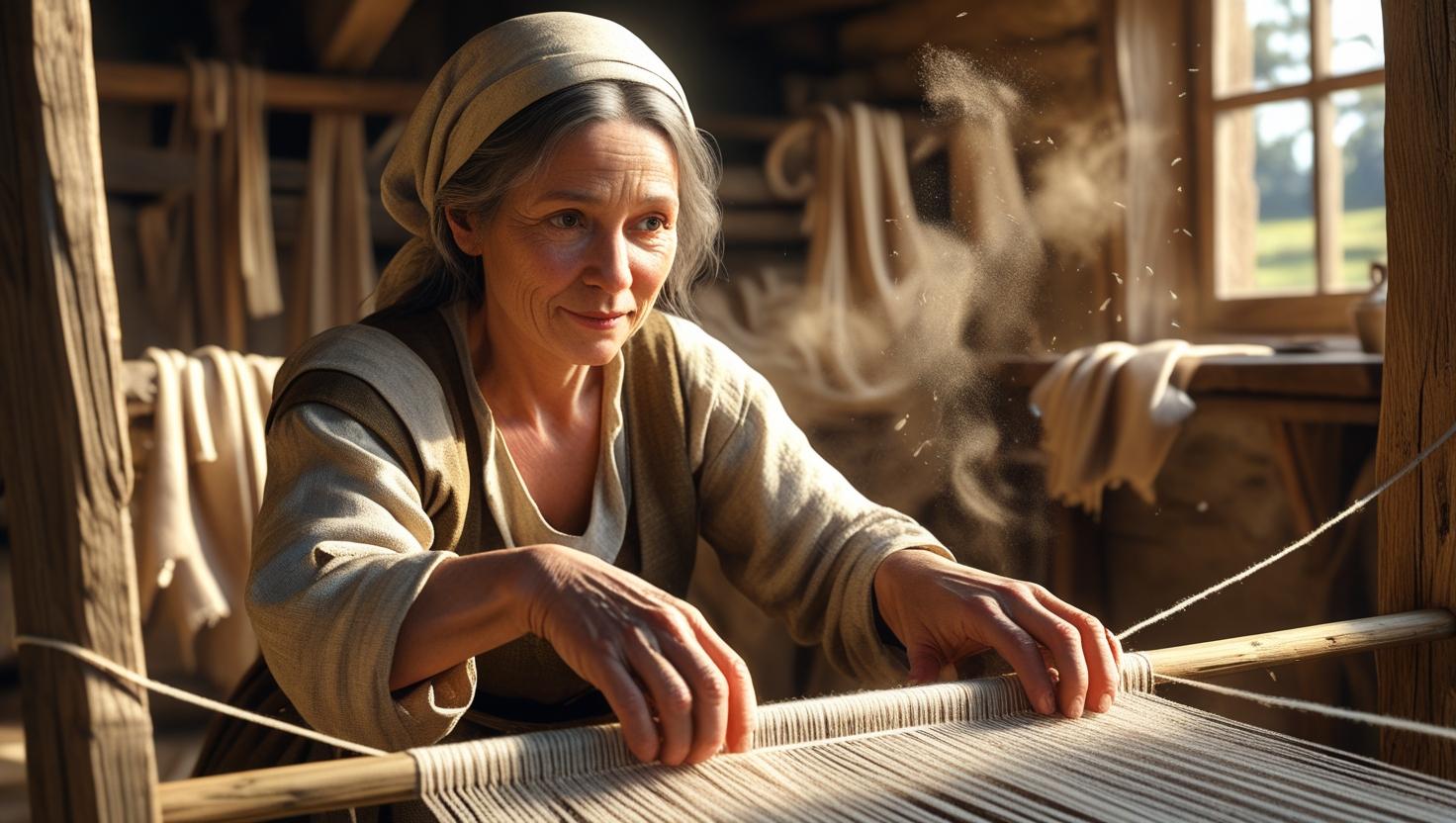Medieval Bedding
Medieval bedding was more than just a place to sleep—it symbolized wealth, culture, and intricate craftsmanship, inspiring today’s timeless designs.
Key Takeaways
- Medieval bedding reflected social status and personal wealth
- Layered textiles and craftsmanship were hallmarks of noble beds
- Modern bedding designs draw heavily from medieval inspiration
The Essence of Bedding in the Medieval Era
Medieval bedding served as a mirror of medieval society, particularly its class structure. Nobility slept on carved wooden frames with feather mattresses and ornate drapery, often made from fine fabrics such as silk or velvet. Commoners, by contrast, rested on straw-filled mattresses on simple wooden platforms or directly on floors. These striking contrasts highlight how bedding reflected not just comfort, but status and identity.
To dive deeper:
- Feather mattresses: Wealthy households used goose- or duck-down, which provided insulation and comfort. These were often encased in high-quality linen tickings.
- Skins and furs: In colder regions, people layered animal skins—sheep, goat, or fur—for added warmth.
- Portable bedsteads: Nobles valued personalized sleep setups so much that they often carried small, collapsible frames when traveling.

This section reveals how the structure and materials of medieval bedding communicated social hierarchy—an influence that still resonates in how we design beds today.
The Role of Bedding in Medieval Ceremonies
Bedding was deeply ceremonial during the medieval era, especially within noble marriage traditions. The “bedding ceremony” marked the union of couples and often involved blessings from religious figures and the formal “installation” of the newlyweds into their bed. These events were often public and richly symbolic, underscoring the societal importance of the bed beyond its physical function.
More than a private act, the bedding ceremony indicated:
- Legal recognition of marriage: It was often the first public act confirming the union.
- Community blessing: Family and guests would offer advice and good wishes.
- Show of prosperity: A richly decorated bed emphasized the family’s status.

For further reading on how beds themselves were constructed and considered significant in that era, visit this bedding ceremony entry for a detailed look at the ritual’s legal and cultural meaning.
The take-home: medieval beds were deeply entwined with social rites. They weren’t just sleep spaces—they were symbols of union, wealth, and faith.
Materials and Craftsmanship: Medieval Bedding Sets
The fabrics and fillings of medieval bedding varied dramatically by class. Nobles used feather-stuffed mattresses, linens from flax, and imported silks. Commoners made do with wool and straw. Yet even among the elite, craftsmanship was prized—embroidery, tapestries, and handwoven textiles turned bedding into heirlooms.
Let’s enrich these ideas with vivid examples:
- Nature of linen: Flax grown in cooler climates produced a durable, breathable cloth. A fine linen sheet might survive decades, making it a key heirloom.
- Embroidery tradition: Common motifs—religious iconography, heraldic symbols, or natural patterns—often depicted family pride or spiritual protection.
- Workshops at court: Royal and noble courts often employed entire guilds of weavers and embroiderers who produced bedding textiles rich with detail.

Today’s home designers still echo this craftsmanship trend. If you’re interested in tactile, historical fabrics, check out this “tick mattress” entry on Wikipedia to learn how stuffing and stitching influenced modern mattress design.
The bottom line: medieval bedding wasn’t mass-produced—it was handmade, personal, and often artful. That human touch lives on in artisan bedding today.
Bedding as a Statement of Wealth
Bedding in medieval times often functioned as a display of wealth. Nobles traveled with their beds, showcasing portable luxury wherever they went. Four-poster beds with embroidered curtains, velvet throws, and gold-threaded pillows were common among aristocrats. These beds weren’t just furniture—they were status statements.
Details to notice:
- Portable bedsteads: Designed to dismantle, these beds were king-sized symbols of power delivered to any castle or manor.
- Curtains and canopy: Aside from aesthetics, they provided privacy and thermal insulation—often prized in drafty halls.
- Color symbolism: Deep reds signified courage; blues represented nobility; gold thread was luxury at its finest.

If you’d like to see real-world examples from the period, this “Medieval Beds: Two Examples from 1488” article highlights surviving bed frames and their contractual details.
In summary, medieval bedding was a literal and figurative bed of status. These visual and functional touches spoke of who you were and where you stood socially.
Medieval Bedding and Modern Day Inspiration
Today’s high-end bedding often draws inspiration from medieval design. Layered textures, intricate weaves, and old-world color palettes—deep burgundies, royal blues, and golds—are staples in collections aiming to evoke regal charm. Companies like Cozy Bed Quarters reimagine these historical designs for the modern sleeper, blending heritage with comfort.
Here are three modern takes inspired by medieval sensibilities:
- Layered blankets: A feather duvet paired with a woven throw—replicates the historic layering method for warmth.
- Decorative tassels and trims: Used on pillows or duvet covers, they reflect the ornamental edging found in medieval linen sets.
- Color-blocked palettes: Deep jewel tones paired with neutrals mimic the richness of medieval tapestries without overwhelming.
Interestingly, a 2023 industry survey noted a 25% increase in demand for textured, artisan bedding—showing that consumers want character, not blank slates. Plus, layered bedding is a go-to trick among designers to add depth, warmth, and visual appeal.
Modern bedding inspired by medieval concepts is less about literal reproduction and more about translating its essence: warmth, texture, and personality.
FAQ
What materials were used in medieval bedding?
Medieval bedding materials ranged from luxurious feathers, imported silks, and fine linens for the wealthy to straw, wool, and animal skins for everyday folk—showcasing both affordability and the desire for comfort.
What was a medieval bedding ceremony?
A ritual marking the consummation of marriage, involving family and religious figures blessing the couple’s bed. It served social, legal, and communal functions—sometimes even including a blessing of the linens used.
How can I recreate medieval bedding in my home?
Choose layered bedding with textures like quilted duvets and embroidered throws, ornate trims or tassels, jewel-toned linens, and an optional canopy or draped headboard to evoke medieval charm with modern comfort—carefully blending aesthetics with practicality.
Learn more in eco‑friendly bedding materials, historical bedding traditions, and mattress accessories guide.













